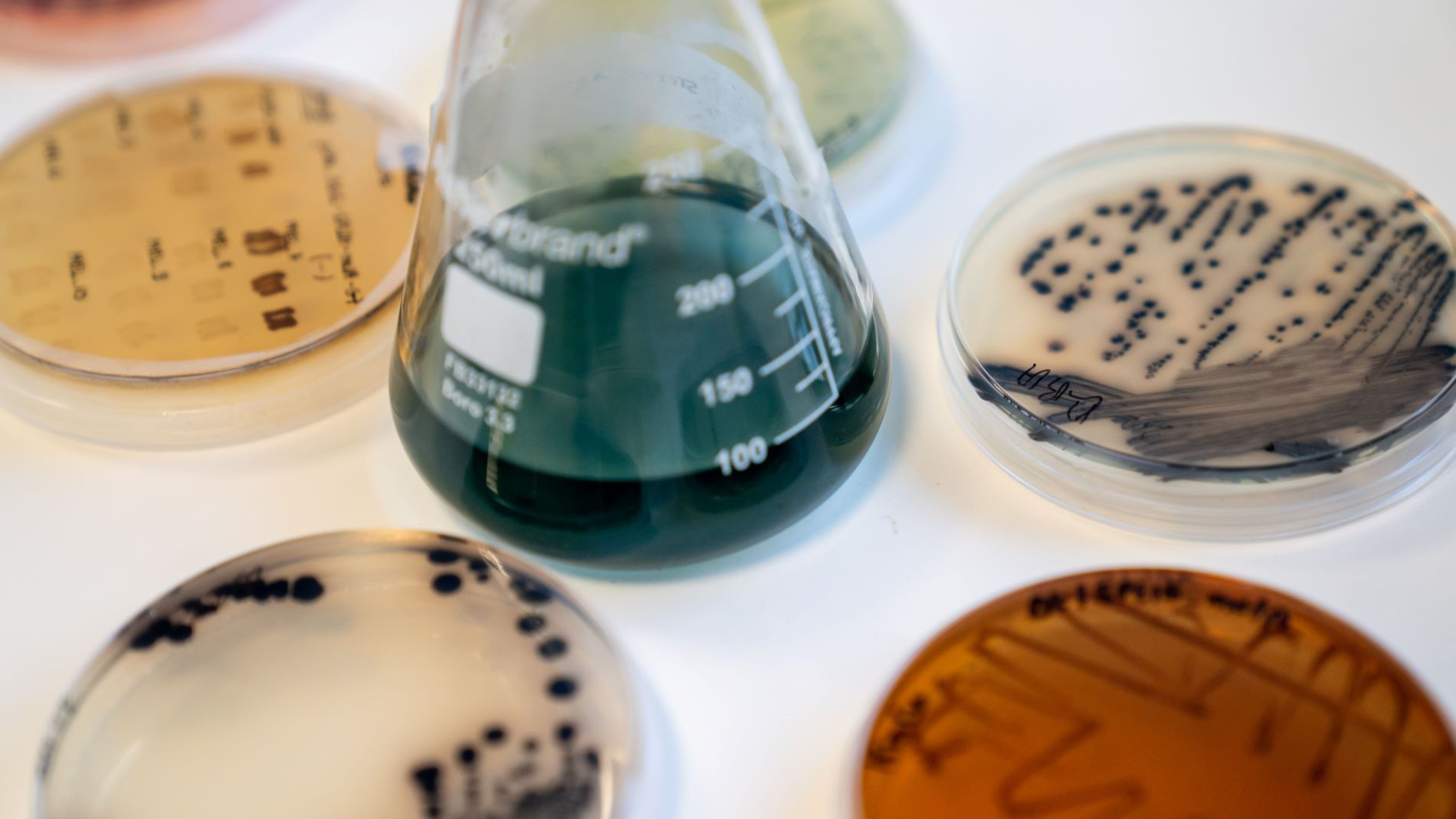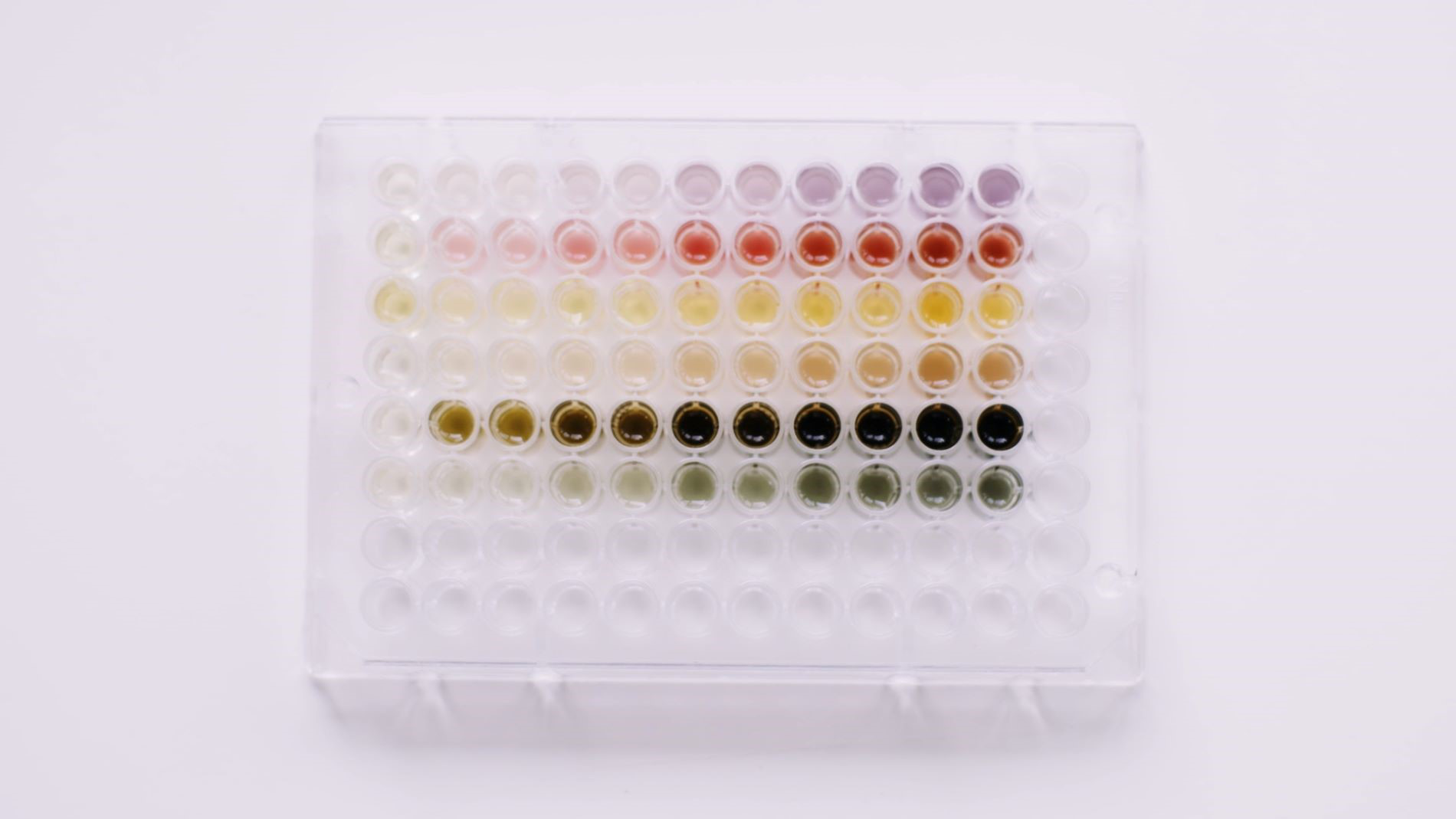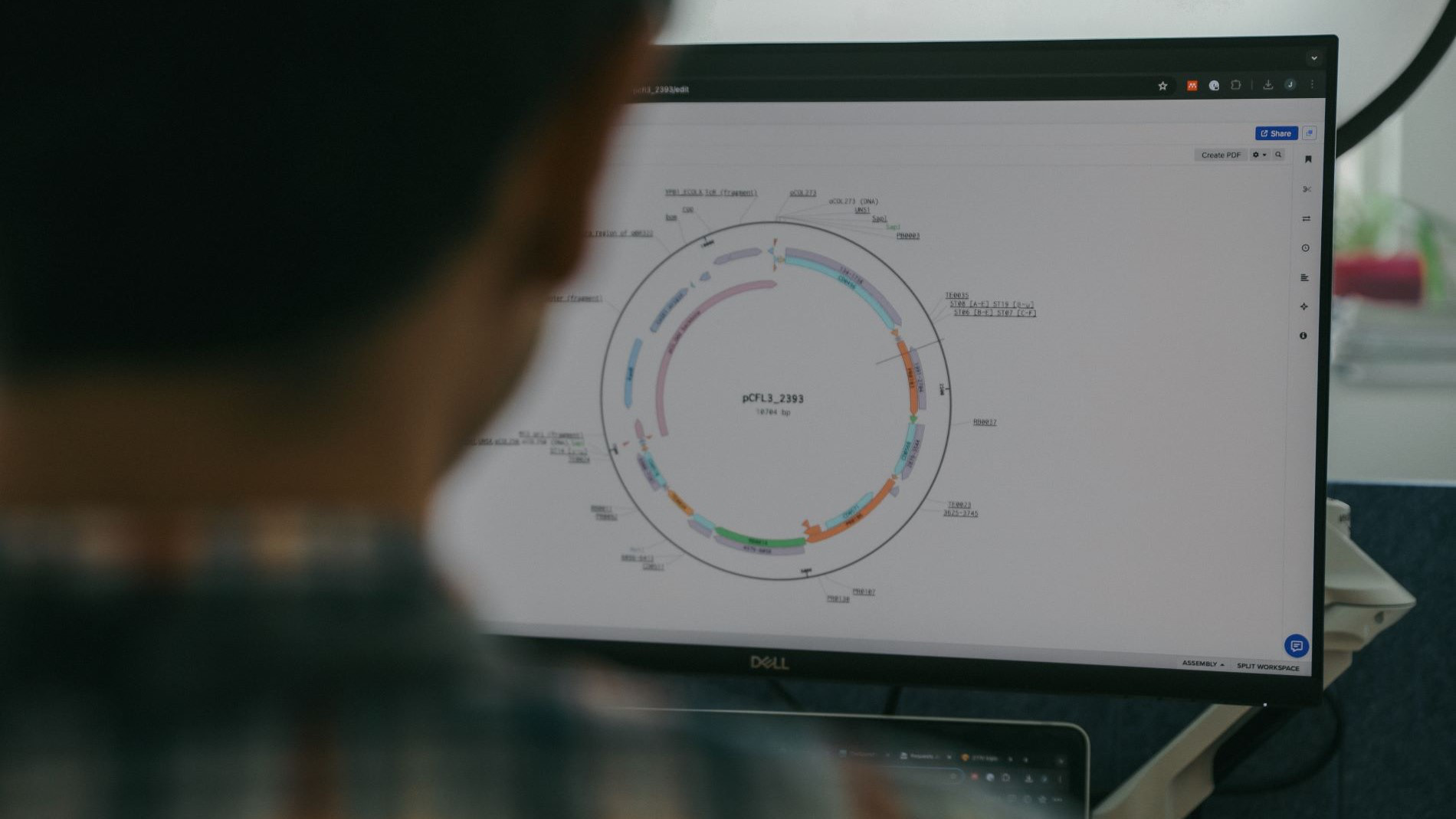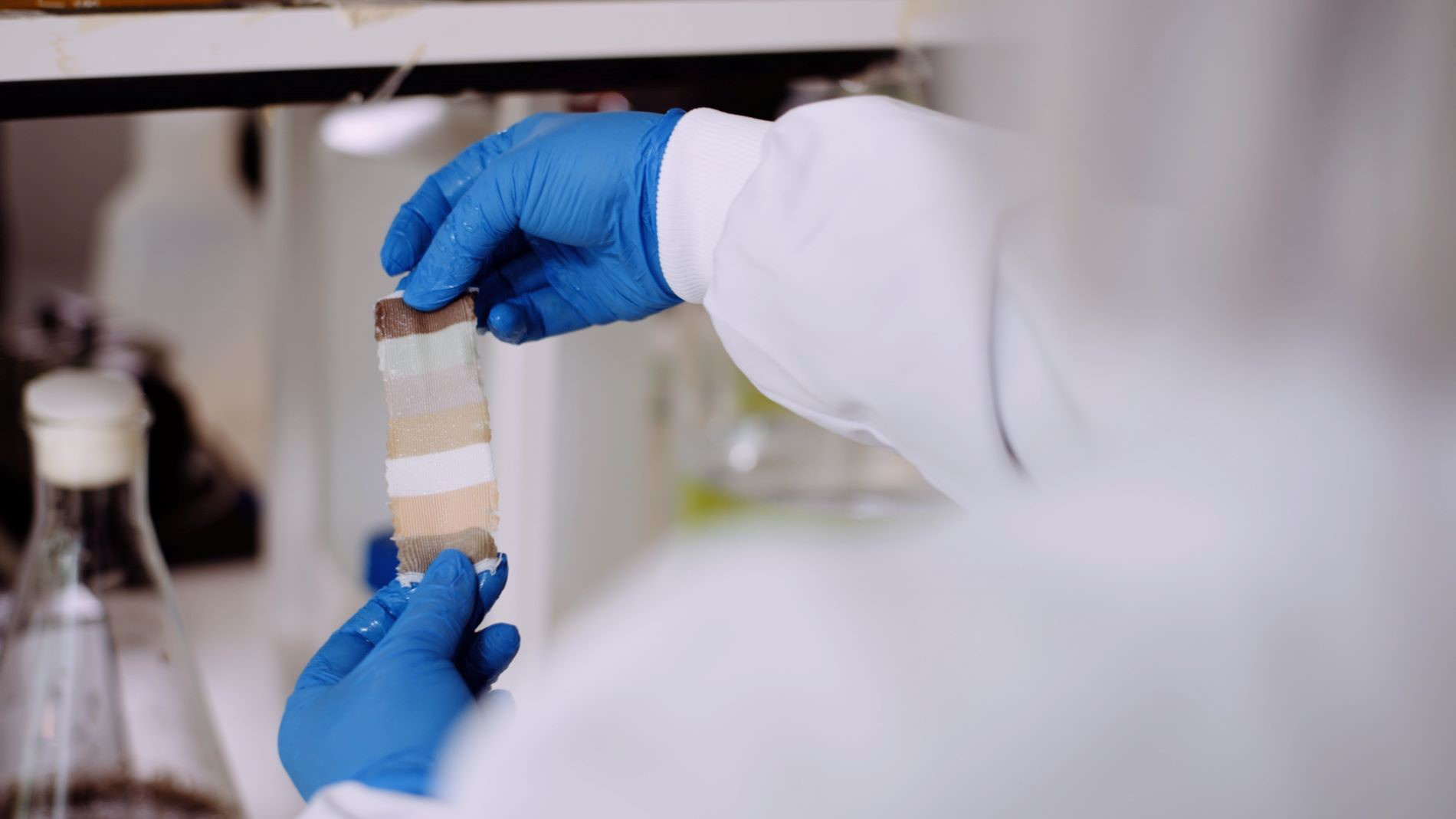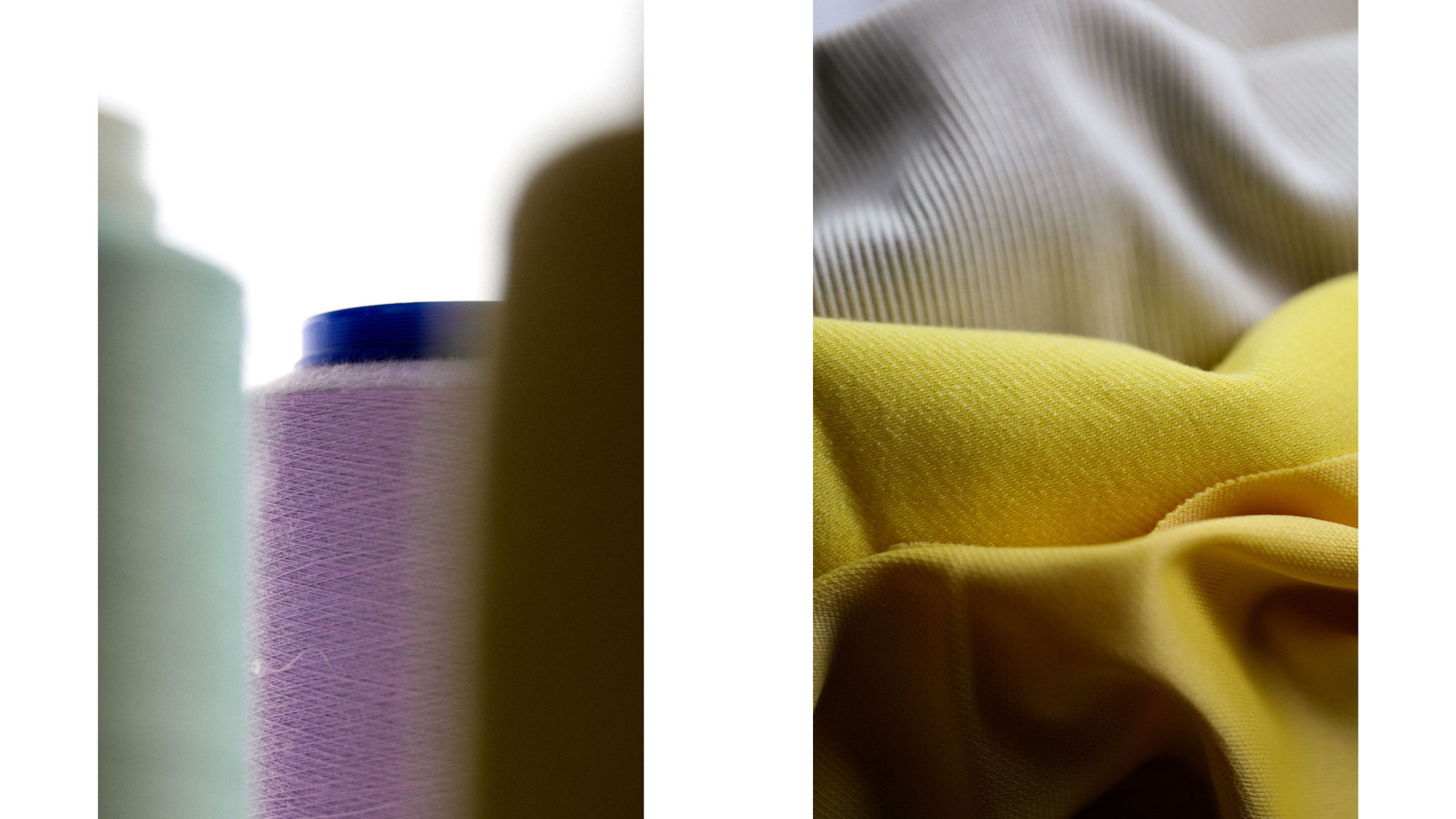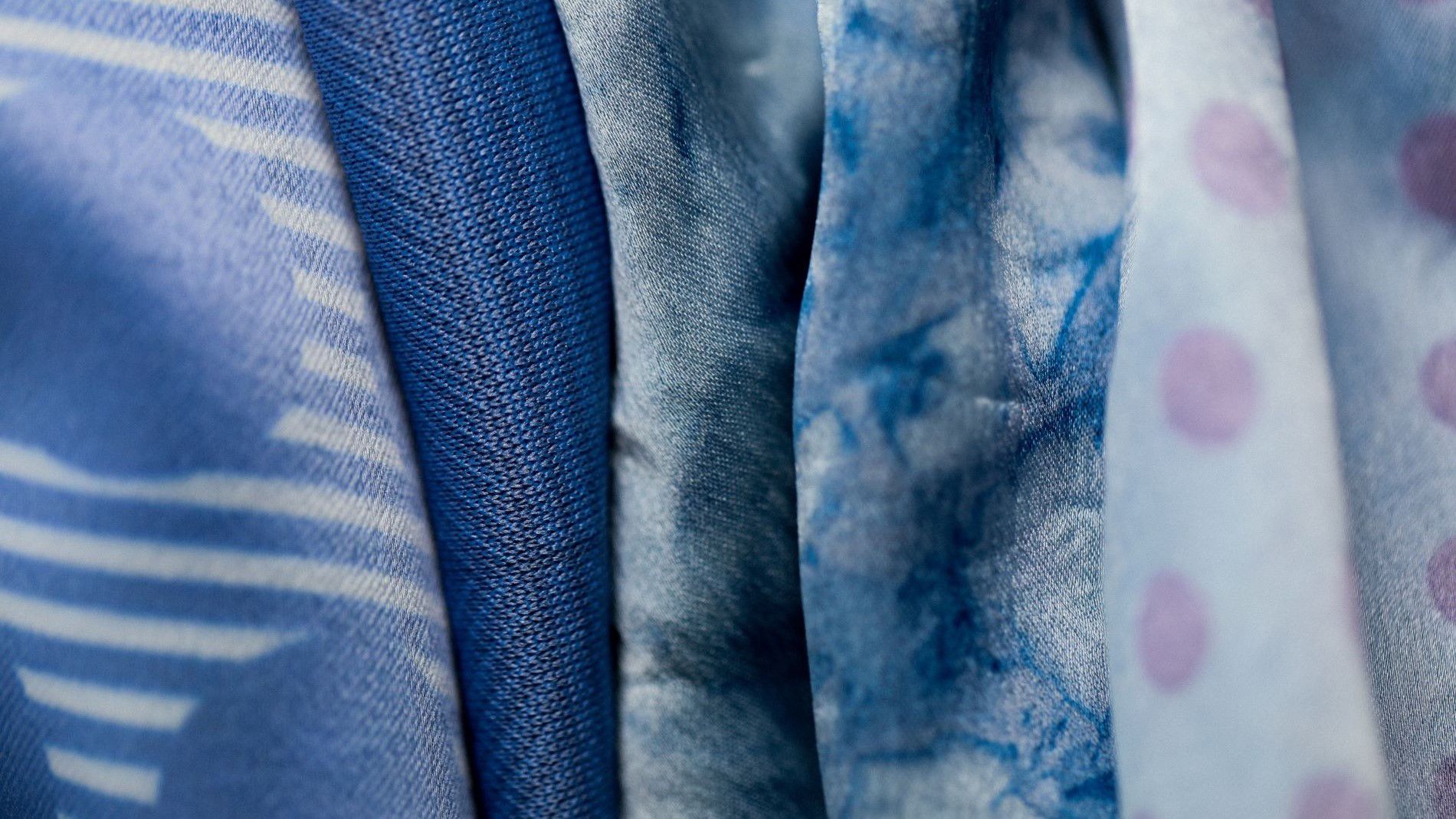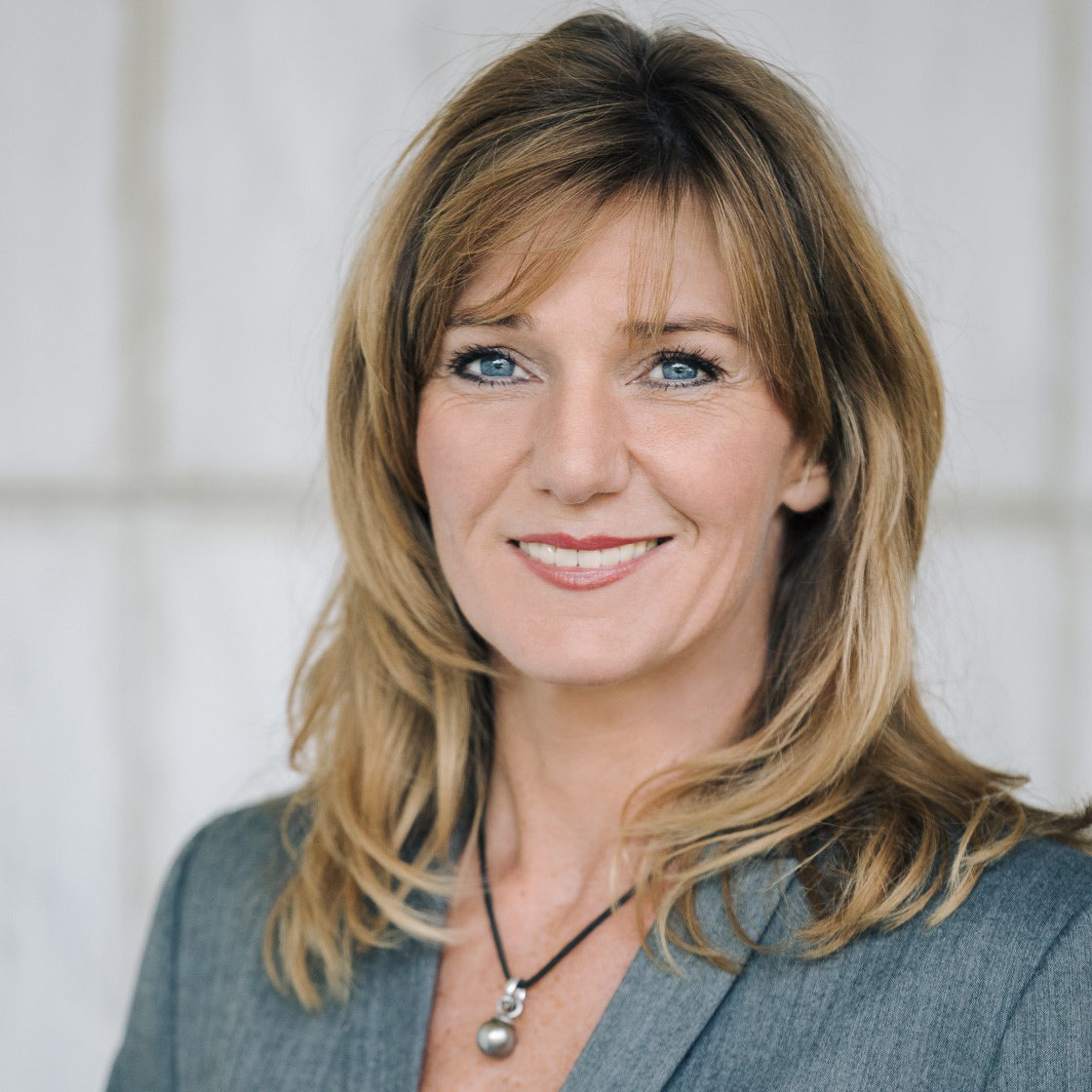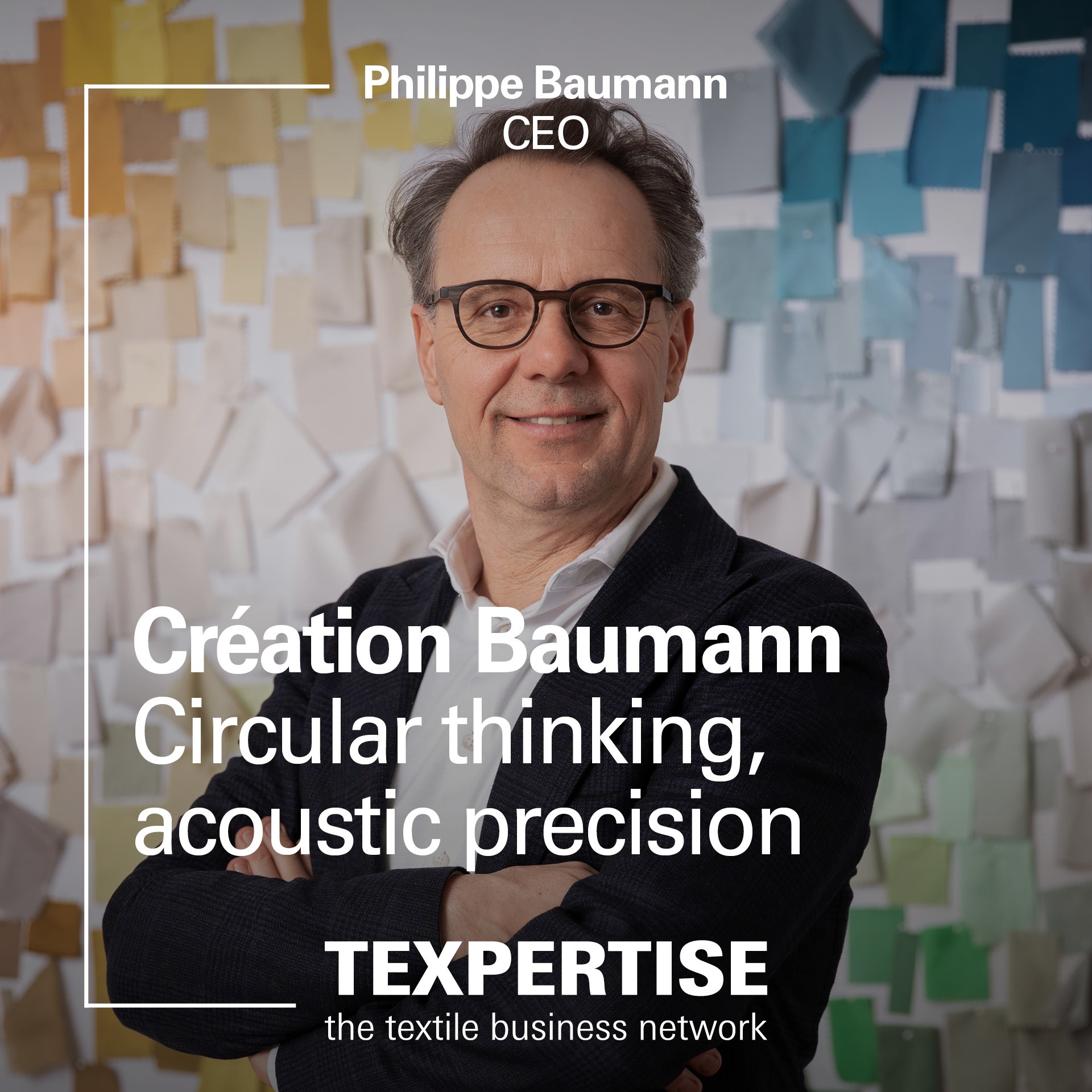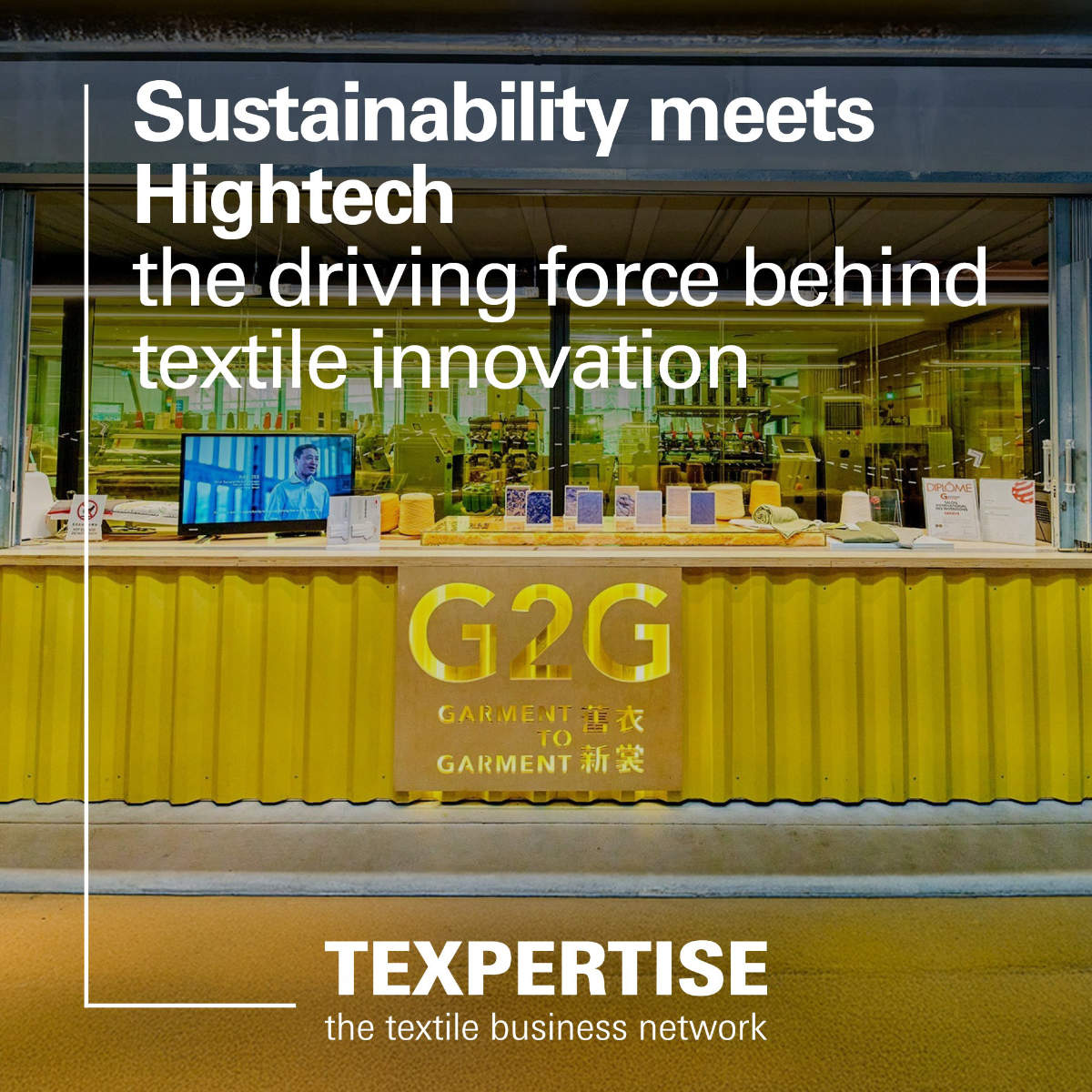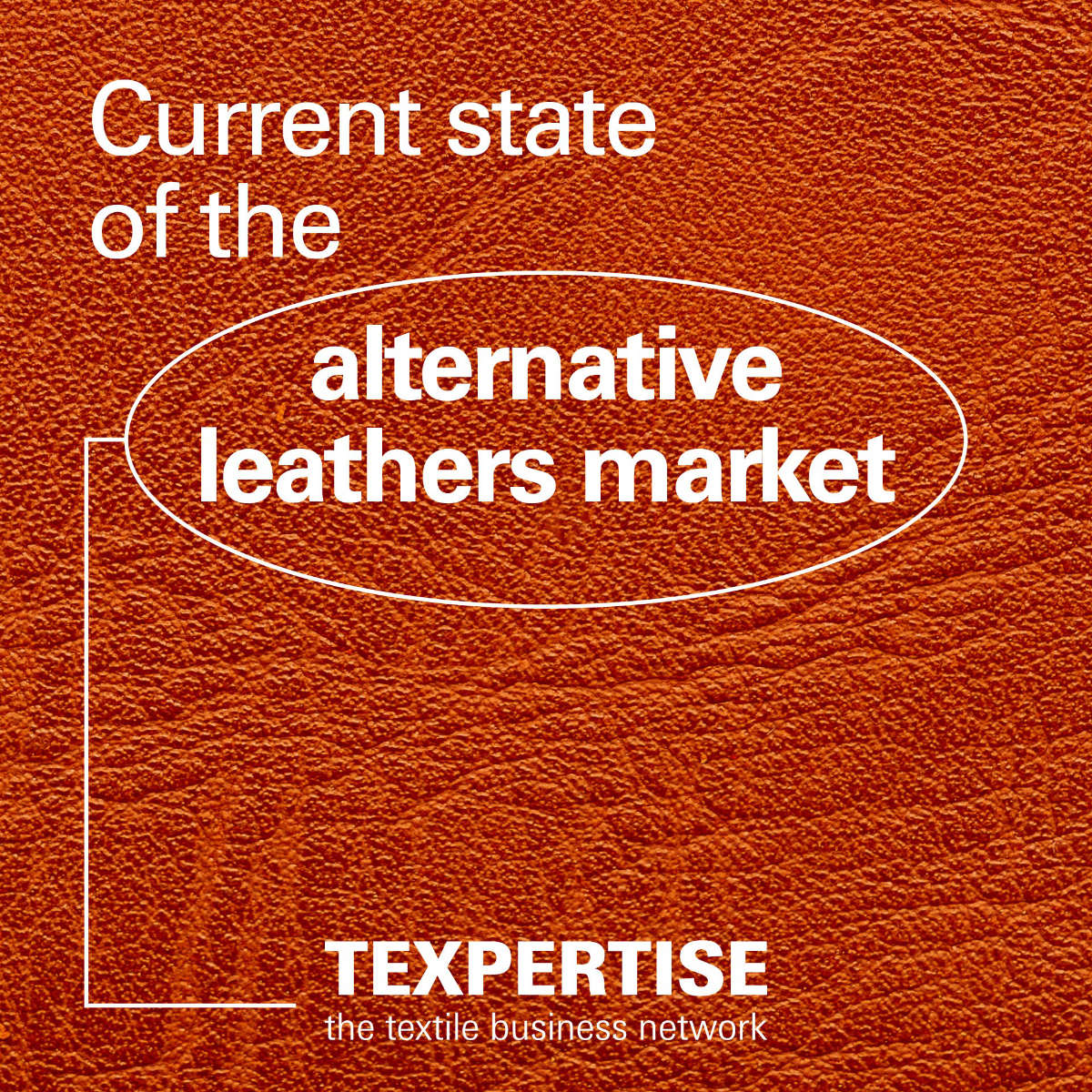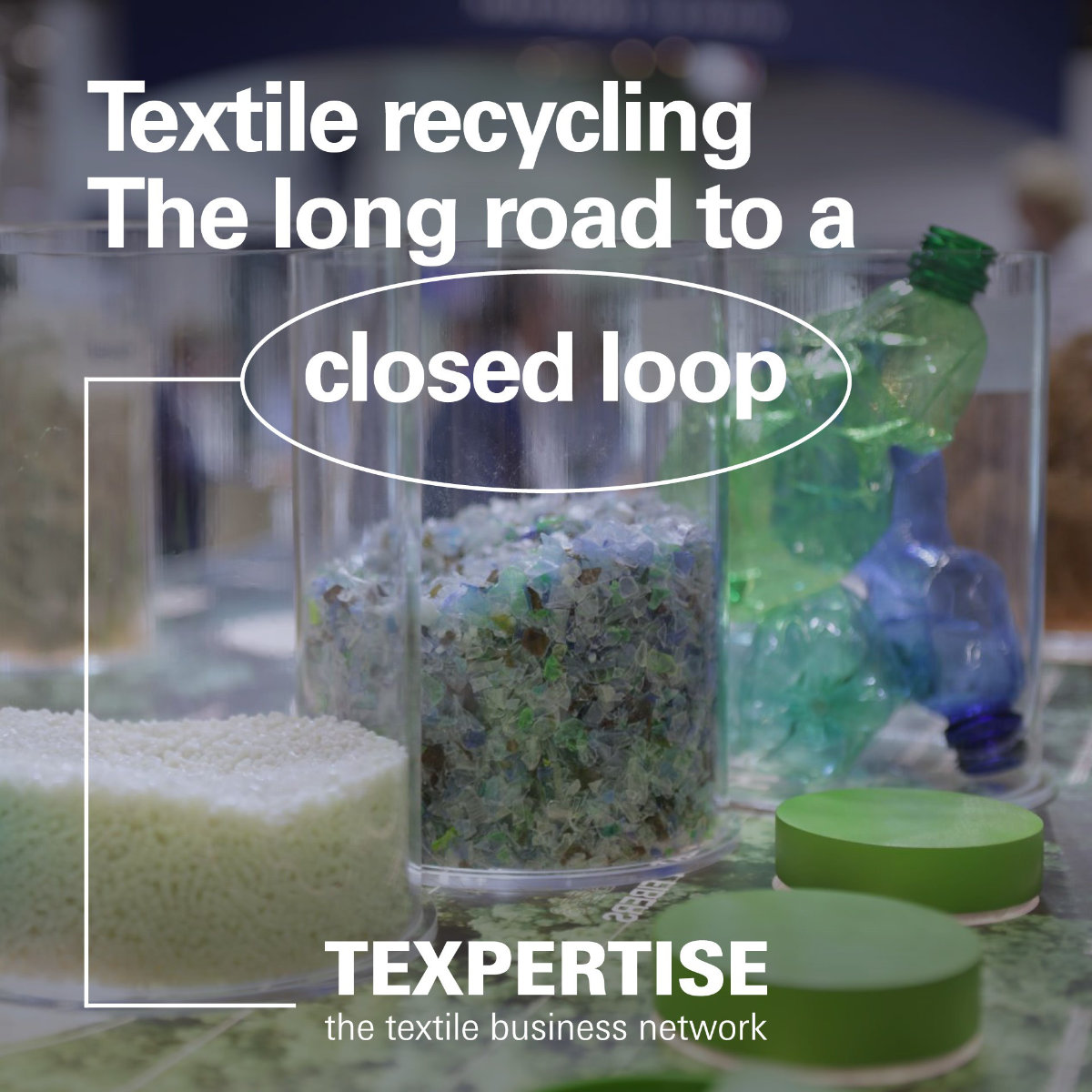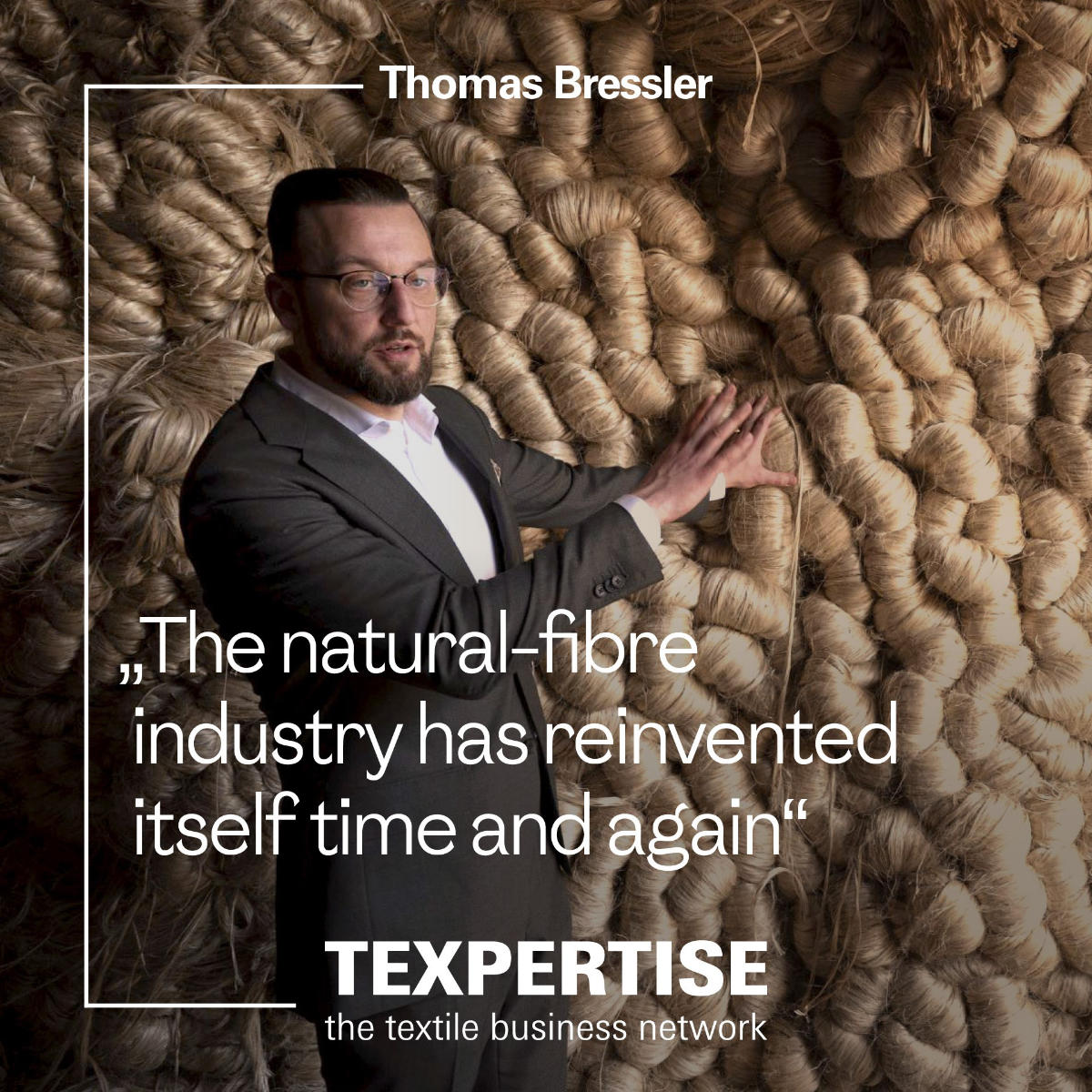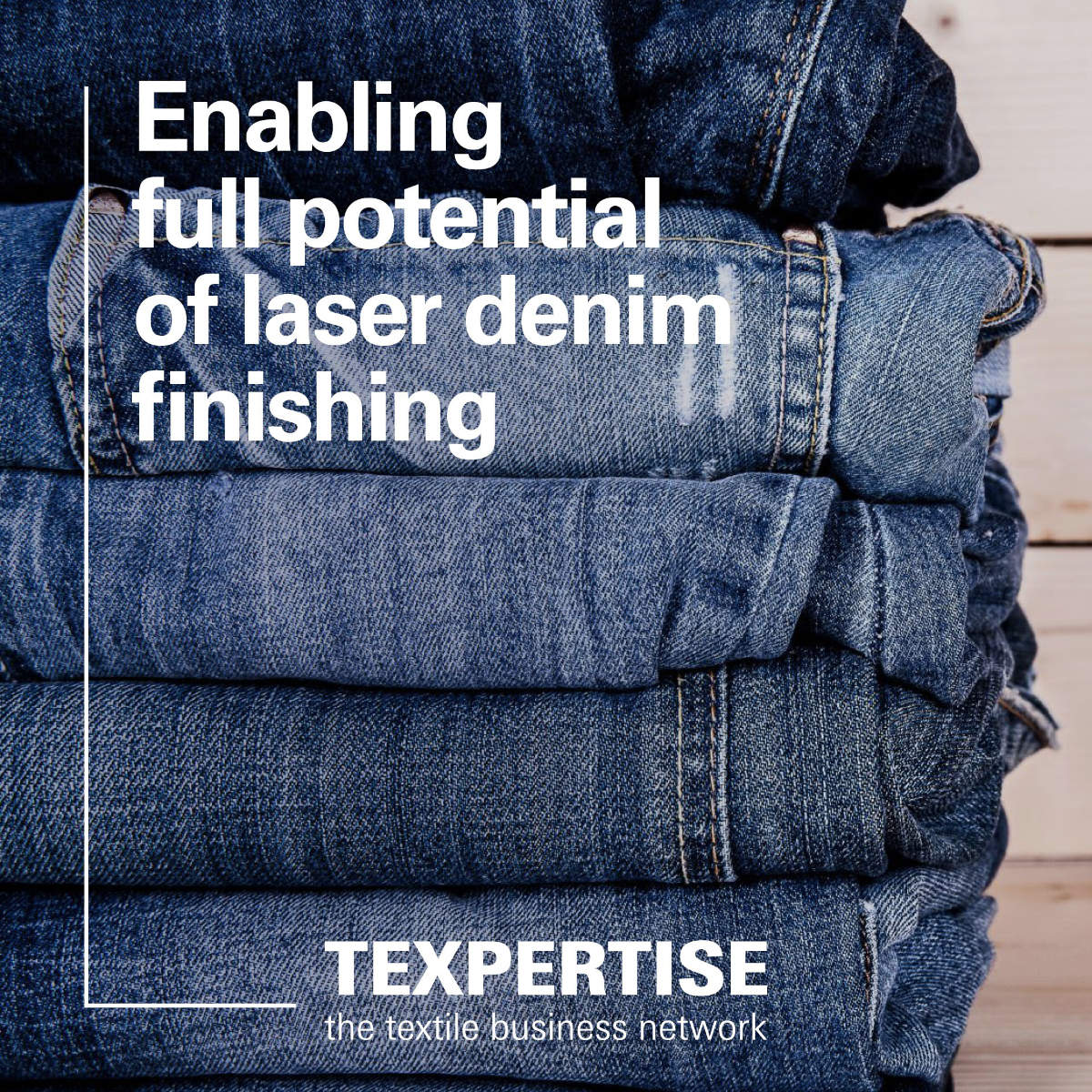Reading time: 4 minutes
Colours from nature have been used for textile dyeing since time immemorial. The British company Colorifix goes one step further. Its process not only replaces chemistry with biology, but also uses colours produced by organisms in nature, such as animals, plants or microbes. What makes it special is that the pollutant-free and resource-saving process enables dyeing companies to produce their own colour batches – at the time and in the quantity they need. This ensures planning security and independence from current supply chains.
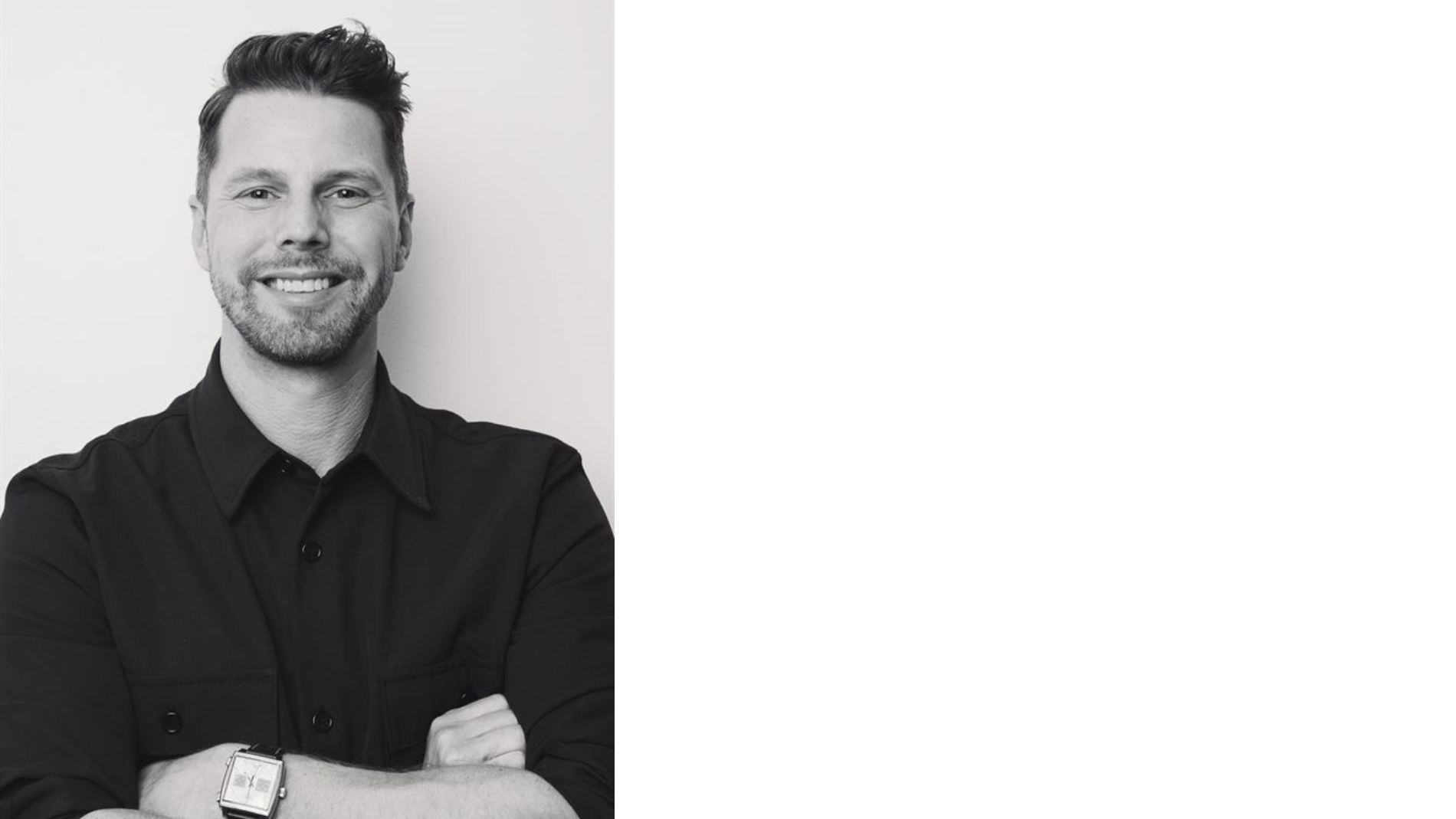
Andreas Andren, Head of Business Development at Colorifix, explains the process and its special benefits.
Colorifix has its origins in a process developed to monitor heavy metal pollution. How did the business idea come about?
During their research using biomarkers in Nepal and Bangladesh in 2013, our two founders Jim Ajioka and Orr Yarkoni discovered serious contaminants in the water which they had not expected. This pollution was identified as originating from dyeing and wet processing in the textile industry. The pair then set out to explore whether the problem could be solved using biological means – and that was the starting point of the company Colorifix.
It's been quite a long time since the start in 2013.
Well, it's like this: producing a colour via microorganisms may look quite simple at first. The big challenge lies in meeting the industry’s quality requirements. Textile dye must be consistent, washable, and resistant to sweat and light, etc. This development took time, but we’ve cracked the code.
How does the process work for your customers?
We identify a desired colour in nature, search for the appropriate gene in available databases and reconstruct the specific DNA chain. It is then implanted into a chassis organism, which “learns” to reproduce the colour. The microorganisms are then freeze-dried and transported in a small vial to the dyeing plant. One advantage is that our customers can produce the quantity of dye they need on site. They simply pour the delivered vial into one of our fermenters, and after 16-20 hours, the microorganism multiplies from 1 to 8 billion. The resulting liquid constitutes the entire dye bath and can be fed into most existing dyeing systems without modification.
The difference from conventional methods is that our dyeing process does not require any additional water, takes less time and runs at lower temperatures, resulting in significant savings in water, electricity and CO2. At the end of the process the dye liquor is briefly heated to 120 or 90 degrees to deactivate the microorganisms. The fabric absorbs up to 98 per cent of the dye. What remains are the deactivated microorganisms, i.e. harmless biomass.
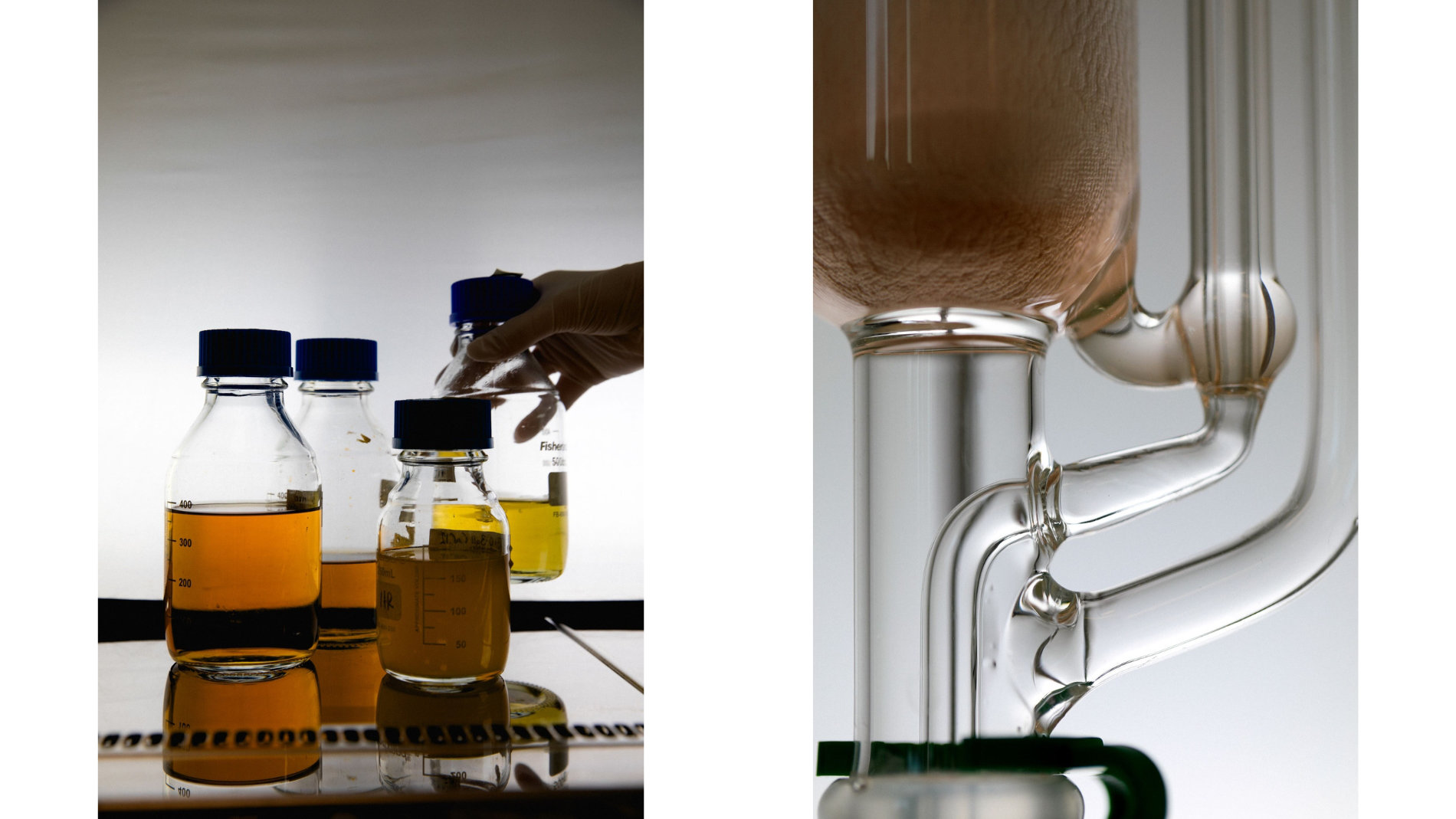
So your customers basically produce their own dye? That sounds pretty revolutionary.
Yes, it is, especially because we are giving dyeing companies control over their product, which gives them a high degree of independence, planning security and flexibility. We don't ship large quantities of ready-made colour around the world, just a small package containing the vials. Our customers can store these and produce the amount of dye they need themselves on the day they require it. Another factor is transparency. Large chemical companies provide very little information about their resource consumption or the chemicals they use. With our process, companies can control their own supply chain.
That sounds good, but the dyeing companies have to invest in the fermenters first, don't they?
Yes, there is a minor up-front investment. But we help in many ways. We have designed our systems to be cost-efficient, they are about three times cheaper than conventional fermenters such as those used in the pharmaceutical industry. We are also working on financing solutions and have set up co-financing, for example. In addition, there are subsidies available for such projects. In the long run, it pays off.
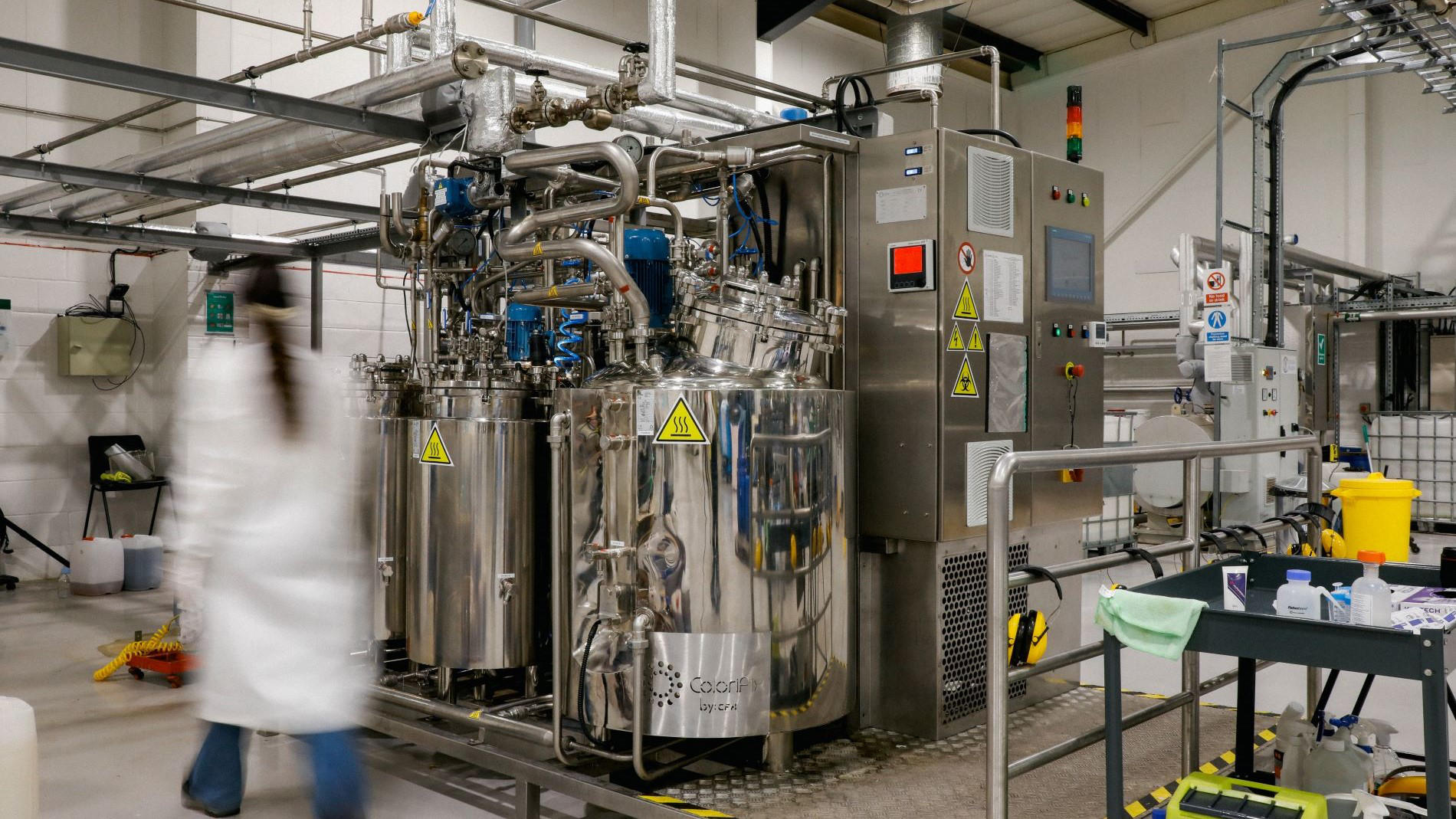
What is the response in the market?
You can tell that the market is ready now. We've been commercially active for a few years. So far, we've worked quite successfully with selected partners on proofs of concept, but we're now moving into the scaling phase. We're already well represented in South America, Europe and South Asia, and we're increasing capacity at several locations. So, things are really starting to happen now.
Summing up
The transformation in the textile industry is in full swing, and it is becoming increasingly clear that switching to sustainable textile dyes can offer numerous benefits that pay off on many levels. From saving energy, water and time to controlling your own product – and to the fact that new, bold and transparent players are spurring competition: for textile dyeing and processing companies, this exciting development definitely means that they have more and more contemporary alternatives at their disposal that can quickly become a relevant economic factor.
Cover photo: Colorifix reconstructs the specific DNA chain. © Colorifix
Series: How things can work
About the series
The challenges facing companies in the textile industry are multifaceted and, to put it mildly, not without difficulty. They range from rising costs for raw materials and energy, a shortage of skilled workers and supply chain problems to the megatrends of sustainability and digitalisation.
Innovative companies seize their opportunities and take advantage of such challenges to generate their business models. However, this rarely works in isolation. Business and research networks are called for.
In the ‘How things can work’ series, we present companies, start-ups and market leaders that have not only tackled a problem but have also used it to develop a sustainable business venture.
Other articles in the series:
Biological dyes as a key economic factor (Part 1)
The circular economy is not just a passing fad
One for all. Making the circular economy work. (Part 1)
One for all. Making the circular economy work. (Part 2)
